"Networks 2021" Сonference: working together, speaking in 10 minutes, listening to presentations instead of series.
A Joint Sunbelt and NetSci Conference attracted network research professionals - physicists, zoologists, mathematicians, sociologists. From July 5th to 10th, they presented their studies from morning to night, discussed the results, and listened to each other. The presentations covered a wide range of topics, from methodical programming of network analysis software to applied things in various fields of science.
The Laboratory has been involved in networking research since the early 2010s. This is not the first time the staff has participated in the Sunbelt conference. As a result of the teamwork of Vera Titkova, Valeria Ivanyushina, and Daniil Alexandrov, the Laboratory presented two papers this year, including "Influence and selection in adolescent drinking: a meta-analysis of SABM studies", which was about the recently published meta-analysis by Vera Titkova and Valeria Ivanyushina.
The report, "Classroom network cohesion and individual network position in predicting student achievement and the sense of school belonging", focused on how a student's position in a friendly classroom network is related to his or her academic achievement and sense of school identity. One interesting result is reported by Vera Titkova:
-- We have found that if a student is well integrated into the friendship network of the class, communicates with everyone, and everyone communicates with him/her, then he/she has a higher sense of being a part of his/her school and has a higher grade point average. Logically, if a person is central to the network, he/she has a greater ability to receive and pass on information. Then we can assume that such a student will perform better because he/she has more resources. It is easy for him to ask for help or find out about a clue. The most interesting thing is that if a class as a whole has a dense friendship network, everyone communicating with everyone, then students in such a team have lower achievement on average than in classes with sparse networks; but it is higher the higher the diameter of the network (that is, the distance between the two most distant nodes). Together, these two results indicate a "rich club" effect. High-achieving students distance themselves from others and create a dense clique, accumulating "resources" from themselves.
Vera also shares that there were familiar colleagues in the section. Someone she had already met at the conference, from someone she had learned how to make networks. In the early 10s, the Laboratory members went to a winter school in the Netherlands, where they got to know people who develop network analysis and research with its application. Some of the colleagues have long been friends with Daniil Alexandrov and Valeria Ivanyushina. Christian Steglich and Marijtje van Duijn from Greningen University came to St. Petersburg in 2011 and conducted an intensive course on network analysis.
Communication and interaction in a scientific community makes it possible to come up with more complex and unexpected findings. When scientists join forces or share their results, other researchers in the future can use methodological or technical tools and create higher-order scientific knowledge, and test and propose new hypotheses. Conferences are one of the ways to combine scientific power to produce cool stuff. By the same logic, interactions within labs and centers are super beneficial.
"It's pretty strange - or maybe not - to eat lunch during conference presentations."
Organizing a discussion in an online format isn't easy. Vera says it was nearly impossible to ask meaningful questions because of strict time limits. After the presentations, the organizers closed the section, and the participants left for their own business.
-- Everyone is given strictly 15 minutes, after 15 minutes the microphone is turned off. If the report takes more than 10 minutes, there is no time for questions. No matter how hard I tried to do it in 10 minutes, both reports were 12 minutes long. Only 3 minutes were left for questions.As for the report on meta-analysis, we had time to ask only one clarifying question. There were no questions to the second report, although I would have liked to hear questions and comments on the influence of the social network structure on attitudes, achievements and behavior of individuals within it.
One more feature of the online format - the participants of the conference were offered to make a preliminary record. It was done to avoid technical problems during the event itself and to be sure not to exceed the time limit. Participants could turn on a pre-recorded 10-minute video of the presentation, and then answer questions online. Vera preferred to speak in real-time:
-- Recording such a video is actually quite difficult, because every time you watch the video, you think you can do better. I honestly tried. I ended up performing online. It was the right decision. If everyone had sent in their recordings, the online conference would have lost the rest of the live human interaction. In my sections, everyone spoke live.
A fun bonus of online conferences is that it is possible to listen to the papers while incorporating them into the routine. In a year of remote work, many people got used to combining the pleasant with the useful. Attendees at the Networks 2021 conference could also practice multitasking:
-- It's quite strange - or maybe not - to eat lunch to the conference papers, eat dinner to the conference papers. Someone is watching TV or series - and you're looking at the results of your colleagues' scientific work. It's fun. Still, the online conferences can replace offline communication after sections at coffee breaks - informal discussion of results and scientific life.

